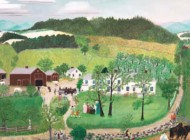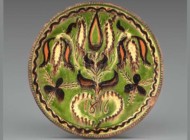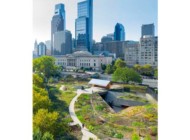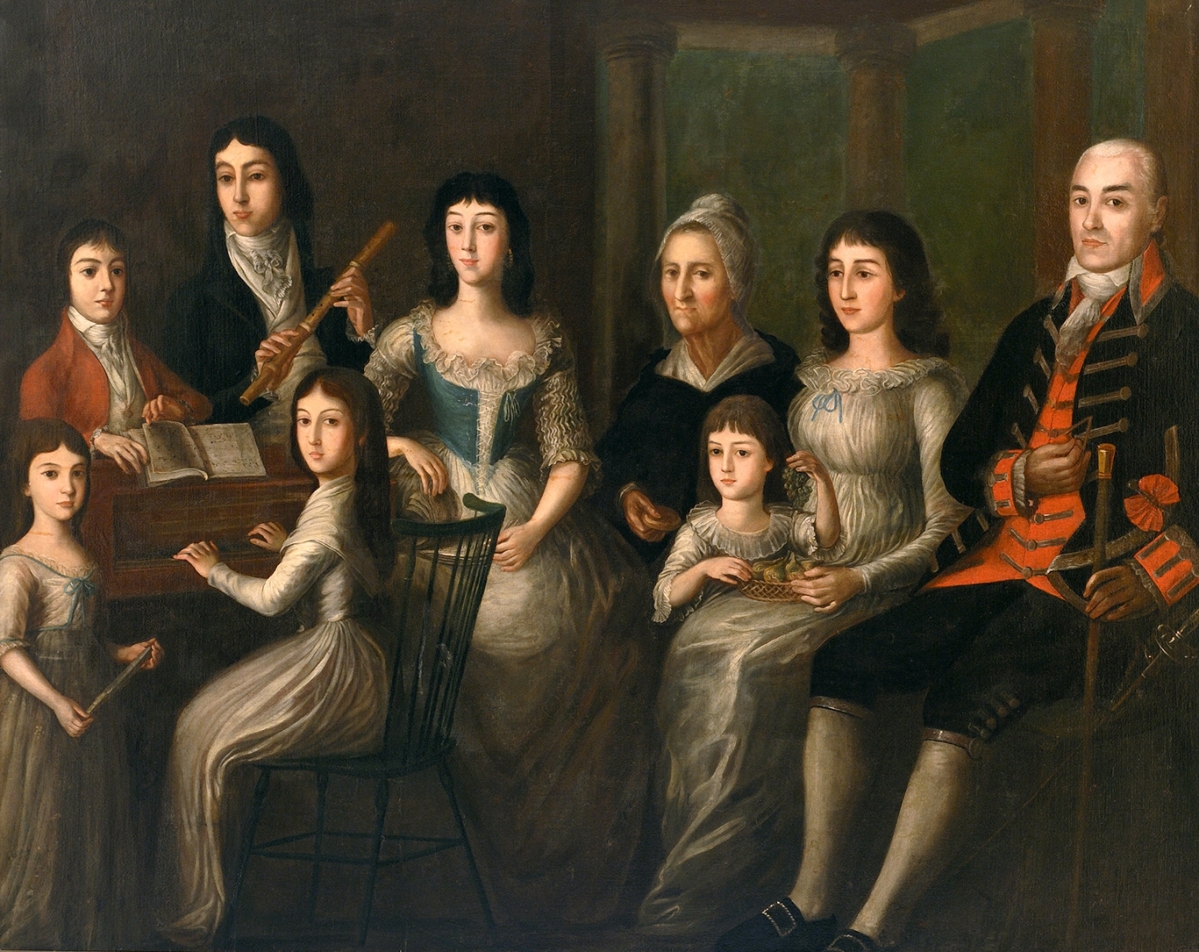
“The Family of Dr Joseph Montegut,” 1797–1800, oil on canvas, 59 by 74½ inches. Louisiana State Museum, loan of Mr Gustave Pitot. On view in “Salazar,” Ogden Museum of Southern Art.
By Karla Klein Albertson
NEW ORLEANS, LA. – New Orleans is celebrating its 300th anniversary this year. In a place known for its spectacular celebrations, the city is mixing street-level festivities with serious exhibitions that explore regional arts and history in the Eighteenth Century, when the Louisiana territory was a vibrant European colonial outpost. Presenting new research on the period, “Salazar: Portraits of Influence in Spanish New Orleans, 1785-1802” is at the Ogden Museum of Southern Art in the Arts District through September 2. At the Louisiana State Museum’s Cabildo on Jackson Square, “Recovered Memories: Spain, New Orleans, and the Support for the American Revolution” is on view through July 8.
Those 300 years of history in New Orleans are more culturally complex than the French surface veneer of Mardi Gras and Vieux Carré might suggest. The city was indeed founded by the French under John-Baptiste Lemoyne de Bienville in 1718, although explorers and traders had visited the area and its indigenous peoples before that date. The spot was chosen for its relatively high ground and access to the great river. A “Plan de la Nouvelle Orleans Capitale de la Louisiana” – basically the French Quarter and surroundings – was published in 1728. An early version of St Louis Cathedral and the brand new Ursuline Convent are marked on the map. The city was named for the French regent at the time, Philippe II (1674-1723), the Duke of Orleans, while the church title honored Louis IX (1226-1270), king of France and a Catholic saint.
As a provision of complex treaties in the wake of the Seven Years’ War, French lands west of the Mississippi as well as the city of New Orleans in 1763 became part of the Spanish Empire, which was actively annexing large tracts in North and South America. Skipping multiple volumes of diplomatic history, Spanish Louisiana returned to French control in 1802, a year before Napoleon negotiated its sale to the United States. Without the years of Spanish control, New Orleans would never have developed the multifaceted Creole culture that is celebrated today. Nor would the city have the important city buildings constructed during the Spanish years that line the tourist mecca of Jackson Square, including the Cabildo (1795-1799) and the Presbytere (1791) or Casa Curial, as it was originally called. These once framed the Spanish version of the Cathedral completed in 1794. What visitors see today is an architectural update and expansion from the 1850s.
During the latter part of the Eighteenth Century, New Orleans naturally attracted talent from other parts of the Spanish Empire. Among this talent was Josef Francisco Xavier de Salazar y Mendoza, the artist born in the Yucatan who is celebrated in “Salazar: Portraits of Influence in Spanish New Orleans, 1785-1802.” Thirty of the artist’s works are featured in the exhibition, curated by Cybèle T. Gontar, who also edited and contributed essays to a catalog of the same title. Gontar explains, “Salazar’s paintings reflect a critical decade in American history, the 1790s, and presage the Louisiana Purchase of 1803. His portraits not only capture the visages of prominent French Creoles and Spanish administrators, but repeatedly show the likenesses of American military personnel and Philadelphia merchants, whose presence foretold New Orleans’ Americanization.”
Gontar has focused her academic research and writing on the importance of Salazar as a major Hispanic artist in Eighteenth Century North America. In the catalog preface, she states, “As you will observe, Salazar’s portraits, with their blended Hispanic, European and Anglo-American aspects, occupy a singular niche of Eighteenth-Century North American Spanish borderland art…While Salazar has remained generally unrecognized as a North American artist, his oeuvre signifies the Louisiana Territory’s fluid geopolitical scene via its diverse subjects and stylistic amalgam of European, Spanish colonial and Anglo-American painterly influences.”
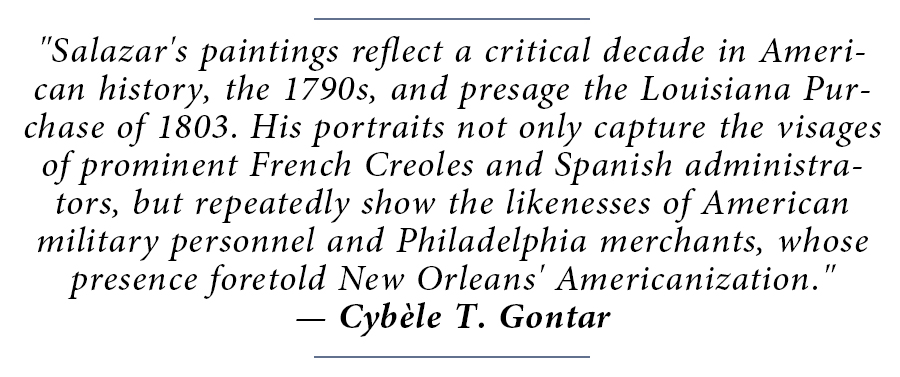 In an interview with Antiques and The Arts Weekly, she said, “I wanted the catalog to be a very complete discussion about what was happening down here, because people in other parts of the country don’t know much about the history of the Gulf South. Therefore, I included a chapter about colonial New Orleans, about the history of Louisiana in the Spanish Empire and about colonial Merida in the Yucatan, where Salazar came from. At the end of the catalog, I put in a chapter, ‘Nexus New Orleans: Mobility and Artistic Exchange, 1780-1830,’ about the city after Salazar, to show where portraiture goes after he dies in 1802.”
In an interview with Antiques and The Arts Weekly, she said, “I wanted the catalog to be a very complete discussion about what was happening down here, because people in other parts of the country don’t know much about the history of the Gulf South. Therefore, I included a chapter about colonial New Orleans, about the history of Louisiana in the Spanish Empire and about colonial Merida in the Yucatan, where Salazar came from. At the end of the catalog, I put in a chapter, ‘Nexus New Orleans: Mobility and Artistic Exchange, 1780-1830,’ about the city after Salazar, to show where portraiture goes after he dies in 1802.”
Among the catalog’s essays, Gontar’s chapter on what we know about Salazar’s formal training is one of the most important. She puts together clues about where he might have seen academic paintings and encountered instruction in painterly techniques in his formative years. She continued, “What we do know is he had some training, because there are aspects of his work which show that he learned how to do a particular thing, such as his use of a red ground or priming layer underneath the pigments.”
If the faces on several portraits seem familiar, it is because Salazar’s works have been star lots in New Orleans sales at the Neal Auction Company over the years. Foremost among those in the exhibition is the portrait of General James Wilkinson (1757-1825), signed by the artist and dated 1799. The painting achieved a still-standing auction record for the artist when it brought $591,000 ($150/250,000) during the Louisiana Purchase Auction in November 2013. The portrait depicts Wilkinson wearing an elegant American officer’s uniform of the 1790s with a distinctive die-struck shoulder belt plate bearing the spread-winged eagle and “USA.” Uniforms, in fact, were his focus when he served as “Clothier General” from 1779 to 1881 in Washington’s Continental Army.
The detailed exhibition catalog entry on this particular portrait discusses at length Wilkinson’s complex military career, which found him working not only for the Americans but also for the Spanish administration in the Louisiana Territory, a true double-agent story from the Revolutionary period. He did serve as Louisiana’s first Territorial Governor (1805-1807) but was court-martialed in 1811, a narrative too complex to do justice to here. Suffice it to say, he had a reputation for vanity on parade. There are other portraits of Wilkinson in uniform by John Wesley Jarvis, Charles Balthazar Julien Fevret de Saint-Memin, James Sharples and Charles Willson Peale.
The nationalities of Salazar’s subjects reveal New Orleans as an international melting pot during his peak painting years. The exhibition includes the portrait of Scottish physician Dr Robert Dow (1753-circa 1841), who trained in Edinburgh and came to New Orleans in 1779 to work in the Royal Hospital. After many years descent in the doctor’s family in the British Isles, the portrait returned to be sold at the November 2014 Neal Auction for $250,000. A personal touch is the small note to his sister that Dr Dow holds in his left hand in the painting.
Salazar painted many groups of parents and children, drawing clients from prominent French families who continued to live in the city. Especially charming is the portrait of Madame Marie Rose Durel Fortier embracing her daughter and that of Clarice Le Duc Pedesclaux and her son, dated 1791. Notable among the portraits of Spanish dignitaries is that of Bishop Luis Ignacio Maria Penalver y Cardenas. Born and ordained in Havana, Penalver is shown with two mitres on a table nearby, indicating that his Diocese included Louisiana and the Floridas. The 1802 portrait is normally on permanent display in the Cabildo.
_and_his_family-1024x760.jpg)
“Don Antonio Mendez and His Family,” 1795, oil on canvas, 36 by 49 inches. Mr and Mrs Robert J. Patrick. On view in “Salazar,” Ogden Museum of Southern Art.
Galleries in the Cabildo, one of many sites administered by the Louisiana State Museum system, are the venue for another anniversary exhibition, “Recovered Memories: Spain, New Orleans, and the Support for the American Revolution.” The goal of the exhibition is clear: while everyone has heard of Lafayette and the efforts of the French in the Revolutionary War, the role of the Spanish – also staunch enemies of the British – is less well known. One exhibit is a 1780 marine painting of a battle off Portugal between warships of the two major naval powers. Jose Manuel Guerrero Acosta, curator of the exhibition and editor of the catalog, says, “‘Recovered Memories’ seeks to provide the visitor with an engaging and carefully documented survey of Spain’s contribution to the founding of the United States.” In addition to paintings, there are historic documents, period costumes and artifacts, such as the British flag captured by the Spanish at the Battle of Baton Rouge in 1779.
One of the most important portraits on view at the Cabildo is that of Spanish General Bernardo de Gálvez (1746-1786) by Mariano Salvador Maella, circa 1783-84, on loan from a Private collection in Málaga, Spain. Galvez defeated the British in Florida in 1781, served as Spanish governor of Louisiana and later as viceroy of New Spain. While in New Orleans, he married a Creole woman, fought British smuggling and kept the port open to supplies for the Revolutionary Army. He was awarded honorary United States citizenship for his support. Read more about his career in Bernardo de Gálvez: Spanish Hero of the American Revolution by Gonzalo M. Quintero Saravia, published this May.
Elsewhere in town, “New Orleans, the Founding Era” at the Historic New Orleans Collection (HNOC) also celebrated the diversity of the city’s earliest populations. Although the exhibition closed May 27, the research is presented in a companion volume of the same title edited by Erin M. Greenwald, the HNOC curator who organized the exhibition. The book, with text in both English and French, is available at www.hnoc.org.
On August 2-5, HNOC will present the 2018 New Orleans Antiques Forum, whose theme is “It Really Works! Utilitarian Objects, Beauty and Utility.” Tom Savage of Winterthur is moderating. Scholars from around the United States will present research on various aspects of the theme, among them Eugene D. Cizek of Tulane University on Creole architecture and Alexandra A. Kirtley of the Philadelphia Museum of Art on Classical Furniture in Mississippi.
The institution will also host the Decorative Arts Trust Fall Symposium – “New Orleans: A Tricentennial Celebration,” October 31-November 4. The schedule is divided between lectures, including a presentation by Gontar on her Salazar research and visits to museums and historic sites. One stop will be the New Orleans Museum of Art. It will display “The Orleans Collection,” including art from the personal collection of French nobleman Philippe II (1747-1793), the Duke of Orleans, October 26-January 27. This tricentennial exhibition will include paintings by Veronese, Rubens, Rembrandt, Poussin and Valentin that were once on view at the Palais-Royal in Paris. A full schedule of that symposium can be found at www.decorativeartstrust.org.
Calendars with all upcoming events as well as trip-planning advice can be found at the official tourism site, www.neworleans.com. Collectors and historians can find pleasant accommodations in the Garden District, surrounded by historic architecture.
The Ogden Museum of Southern Art is at 925 Camp Street. For information, 504-539-9650 or www.ogdenmuseum.org.
The Cabildo, Louisiana State Museum, is at 701 Chartres Street, 504-568-6968 or www.louisianastatemuseum.org/museum/cabildo.
Journalist Karla Klein Albertson writes about decorative arts and design.

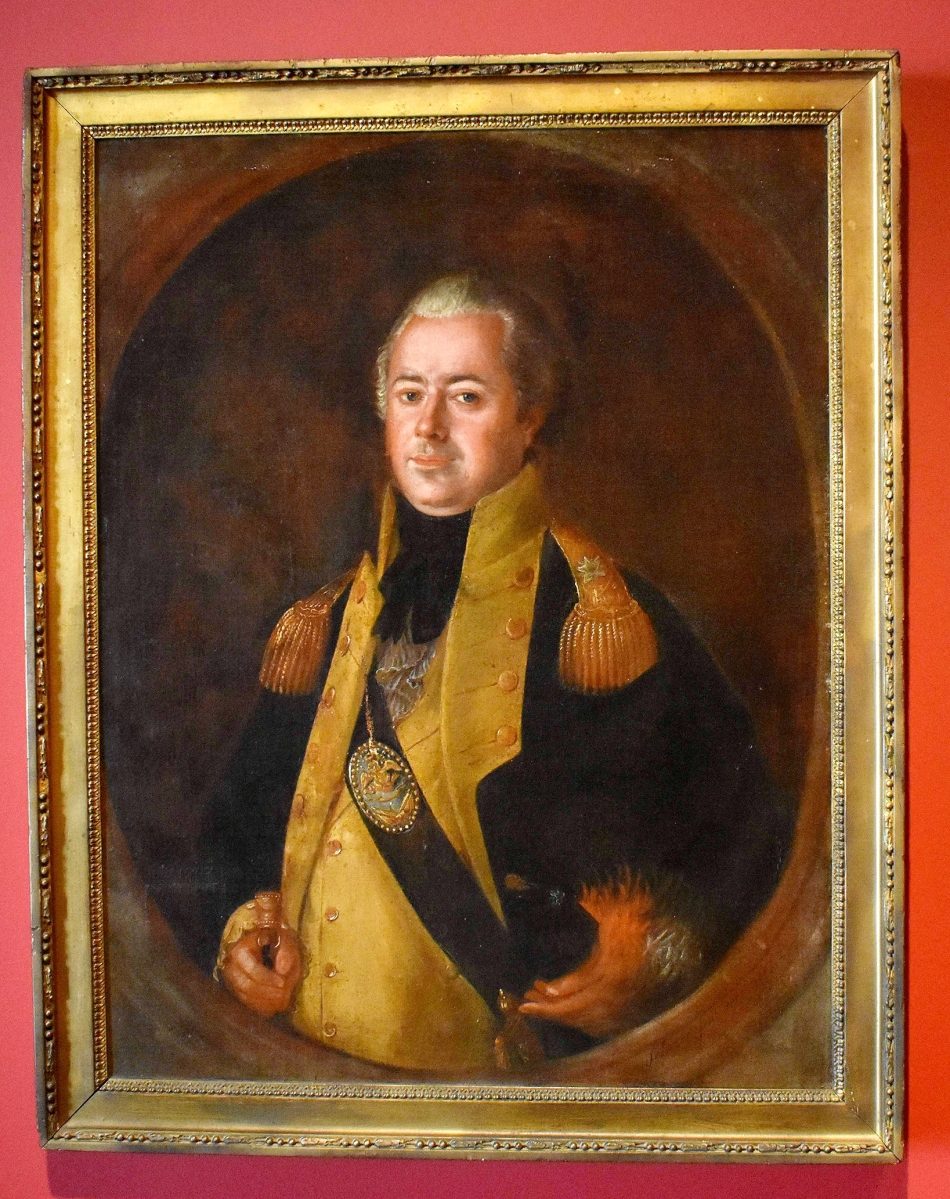
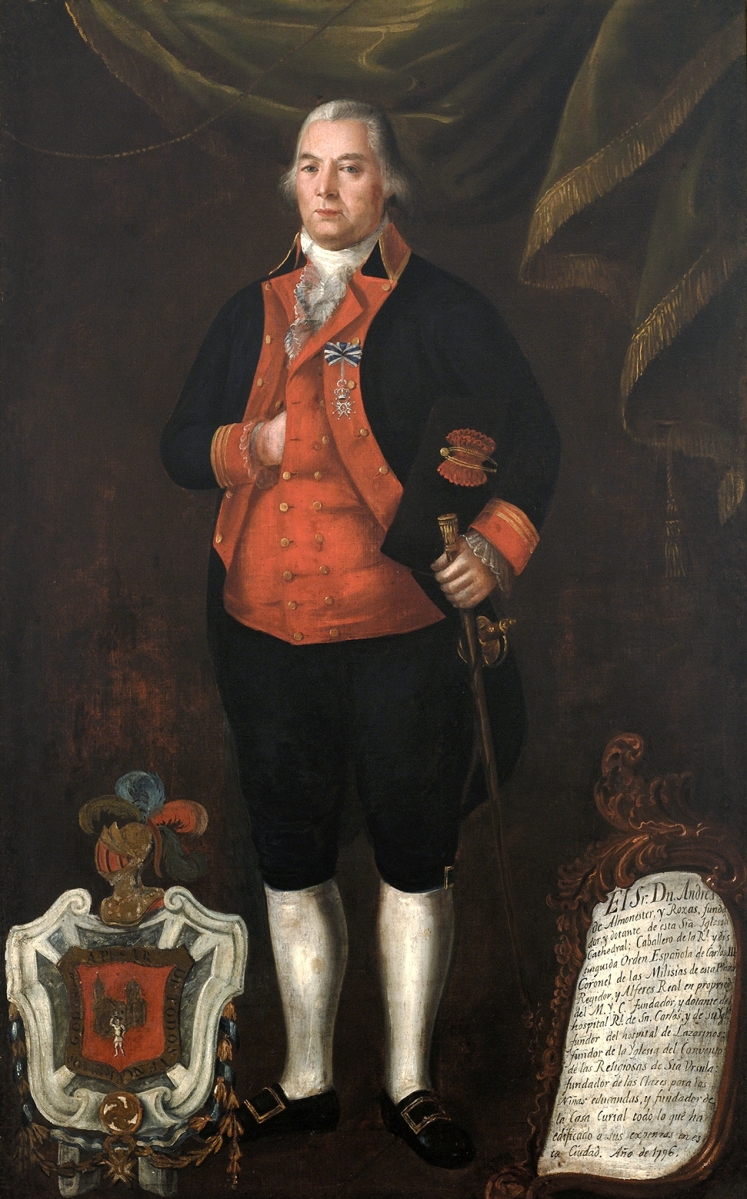
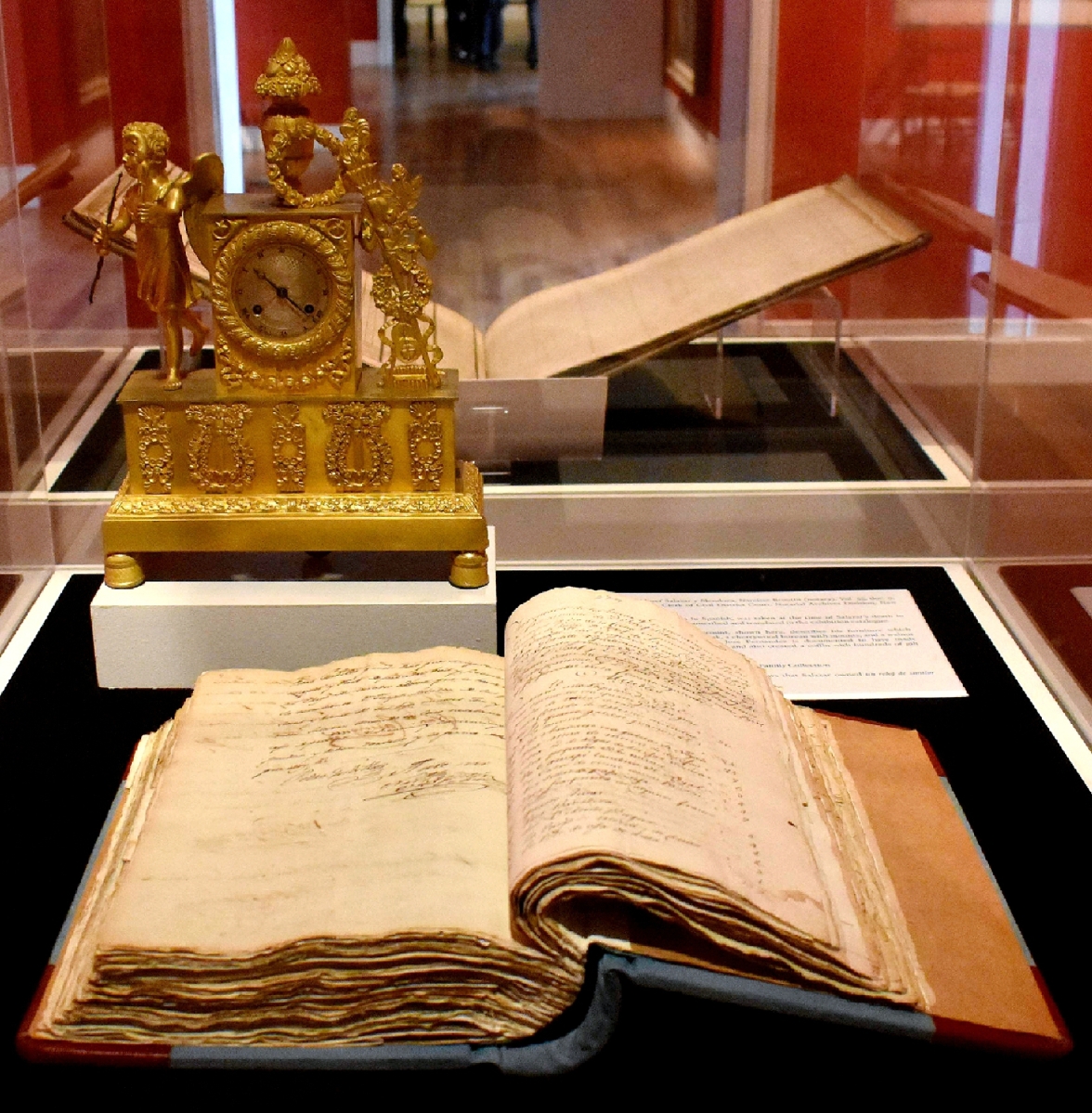
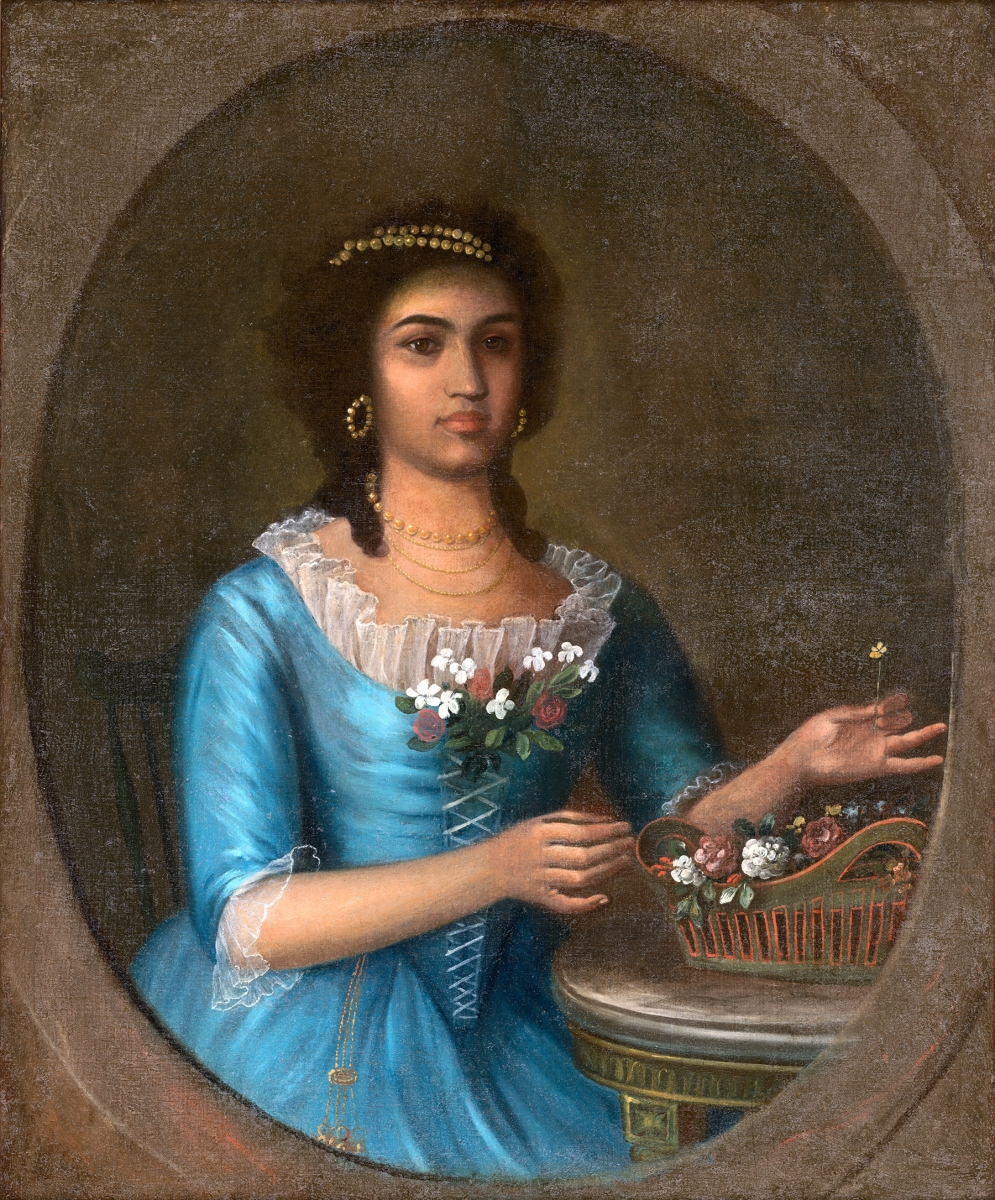
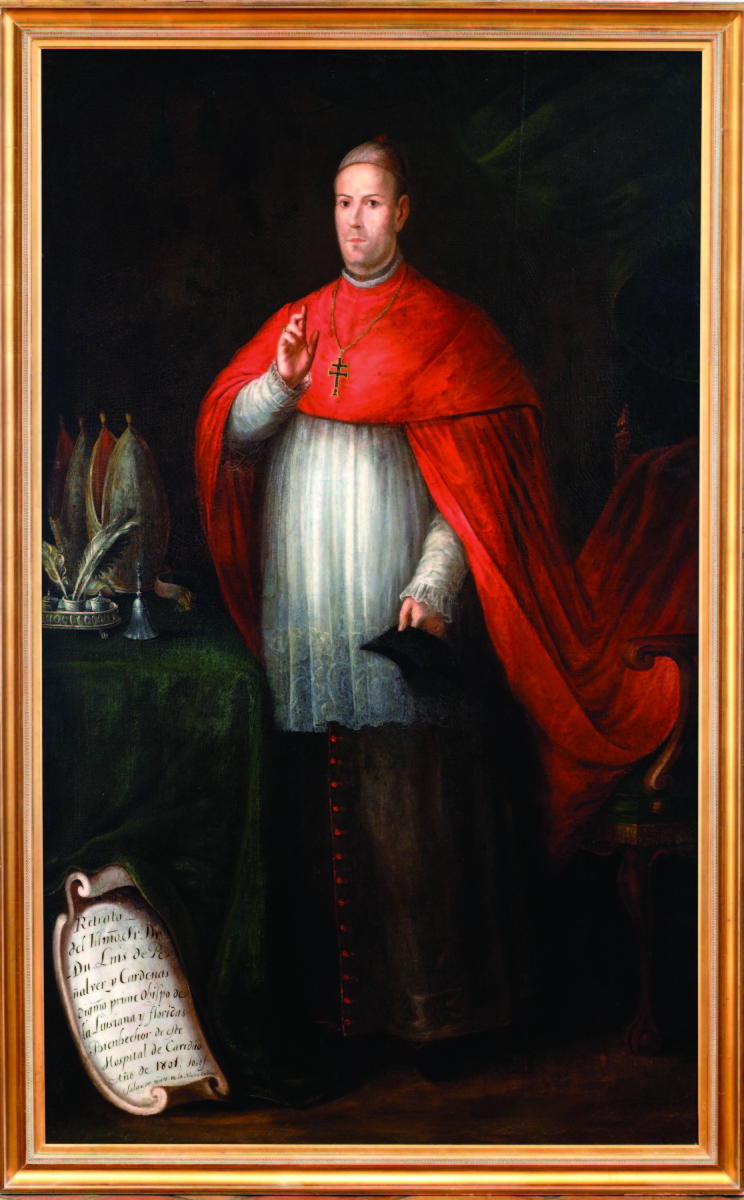
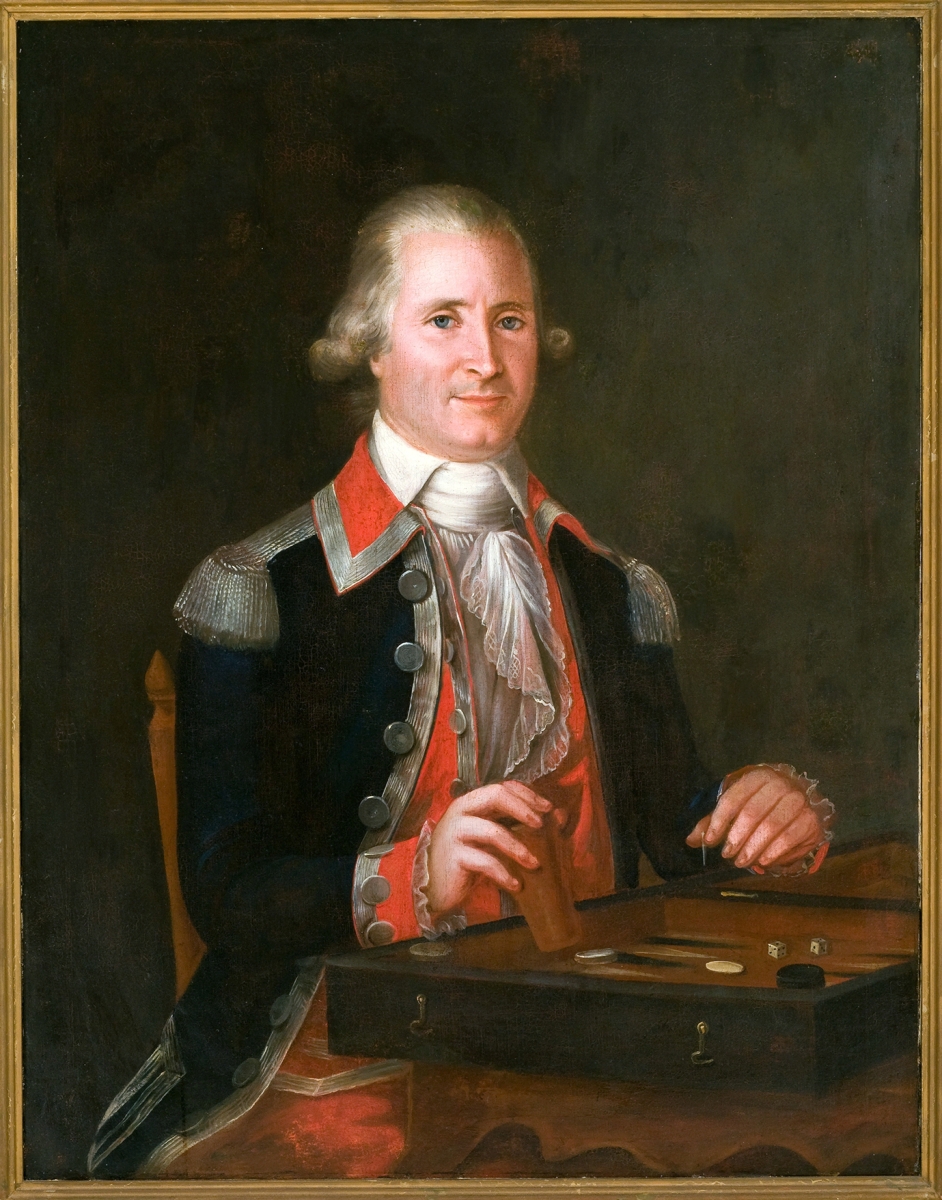
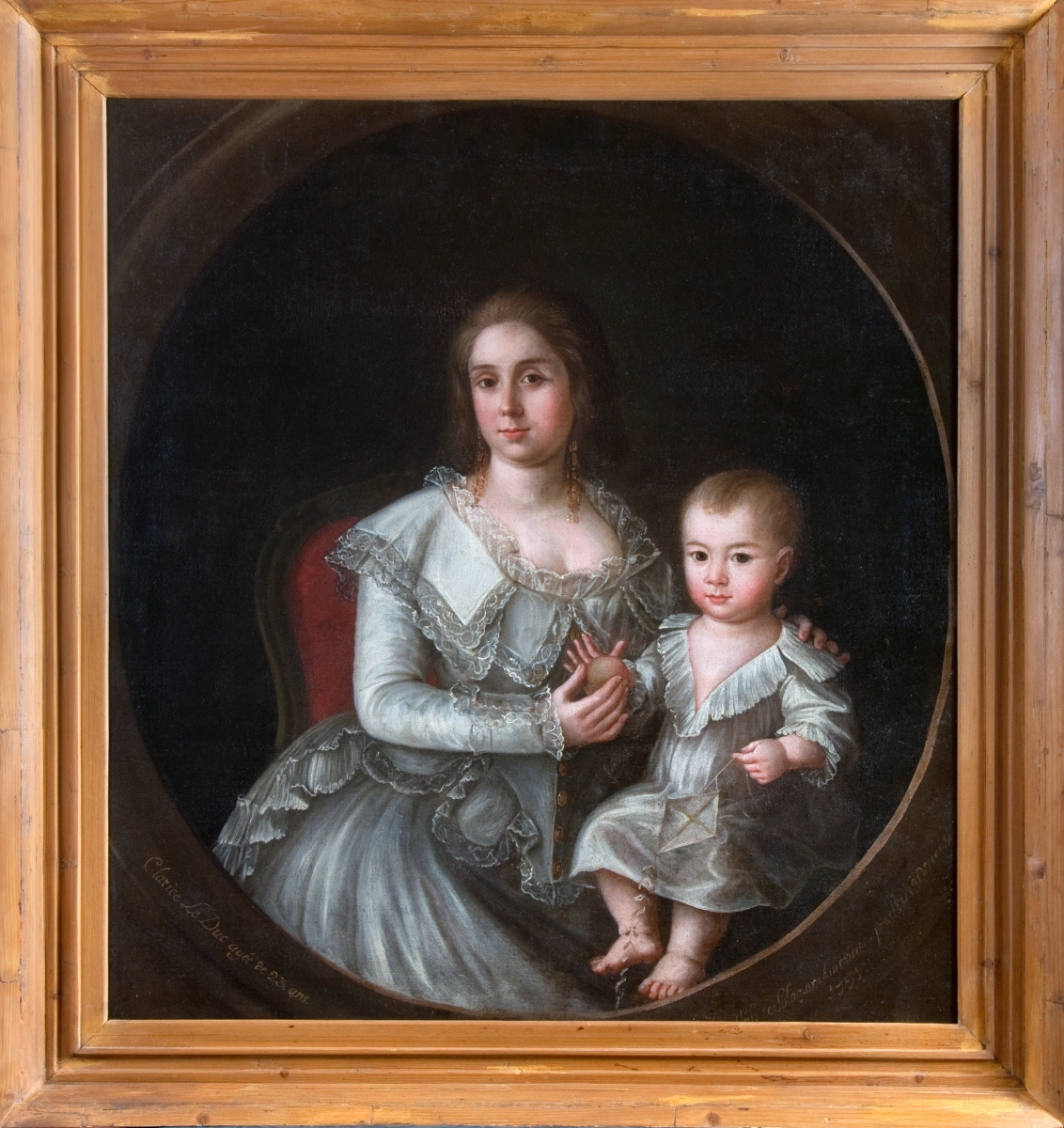
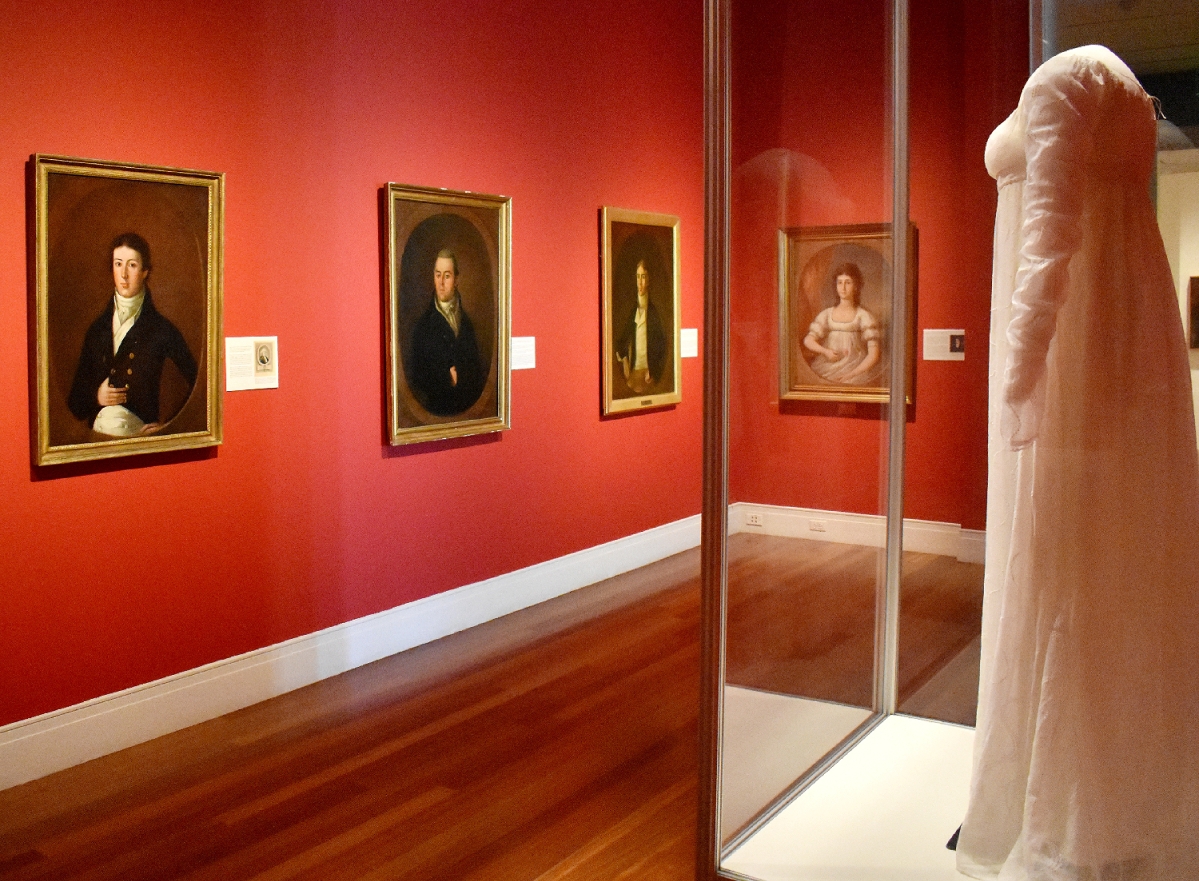
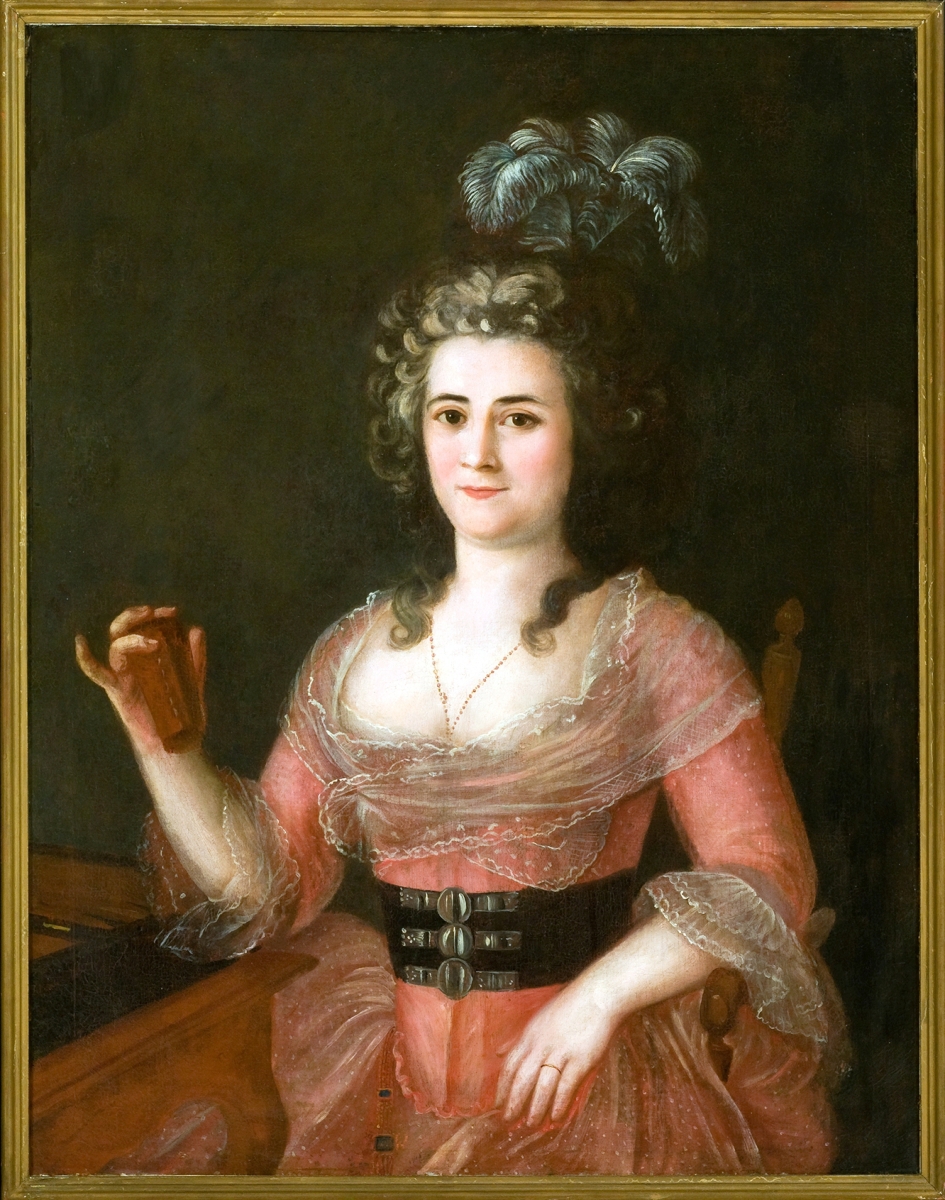
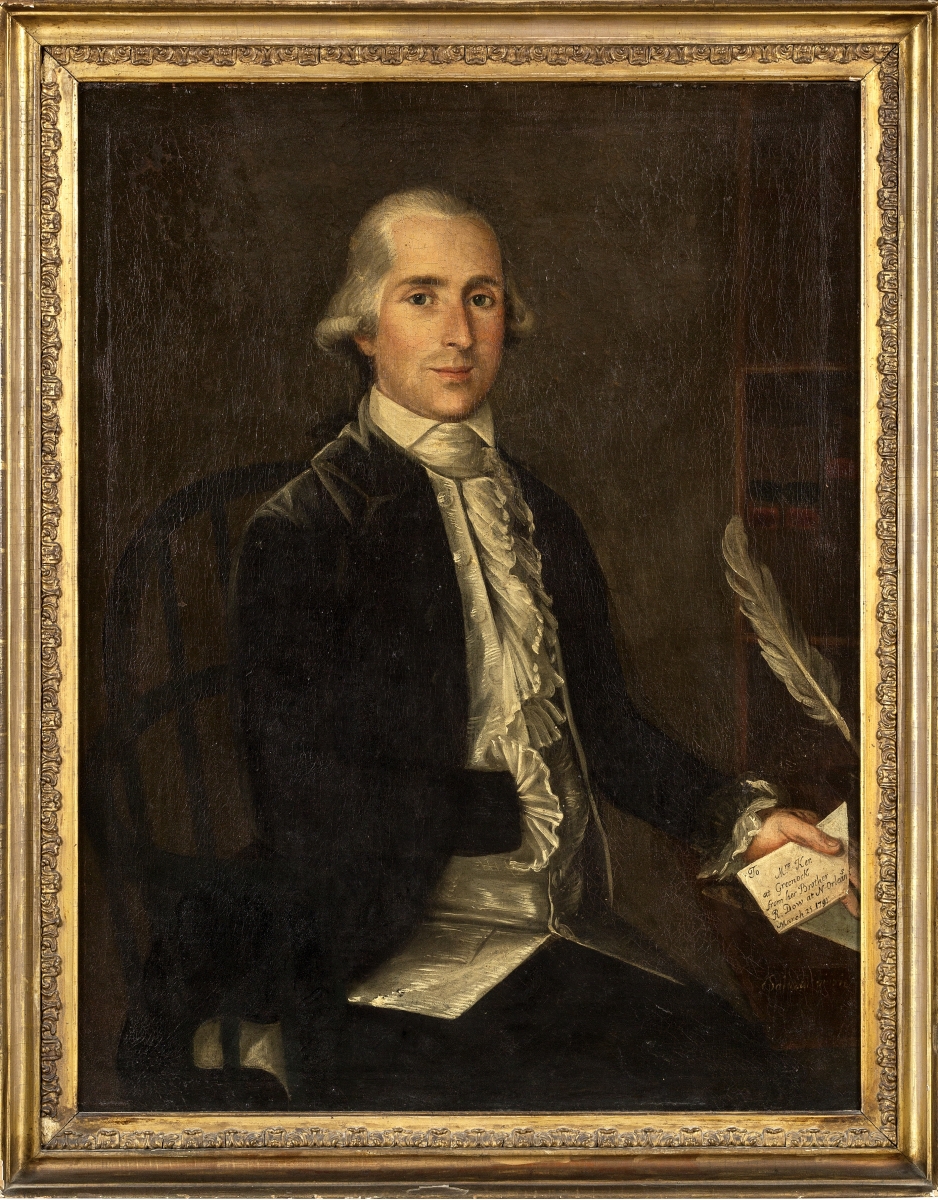
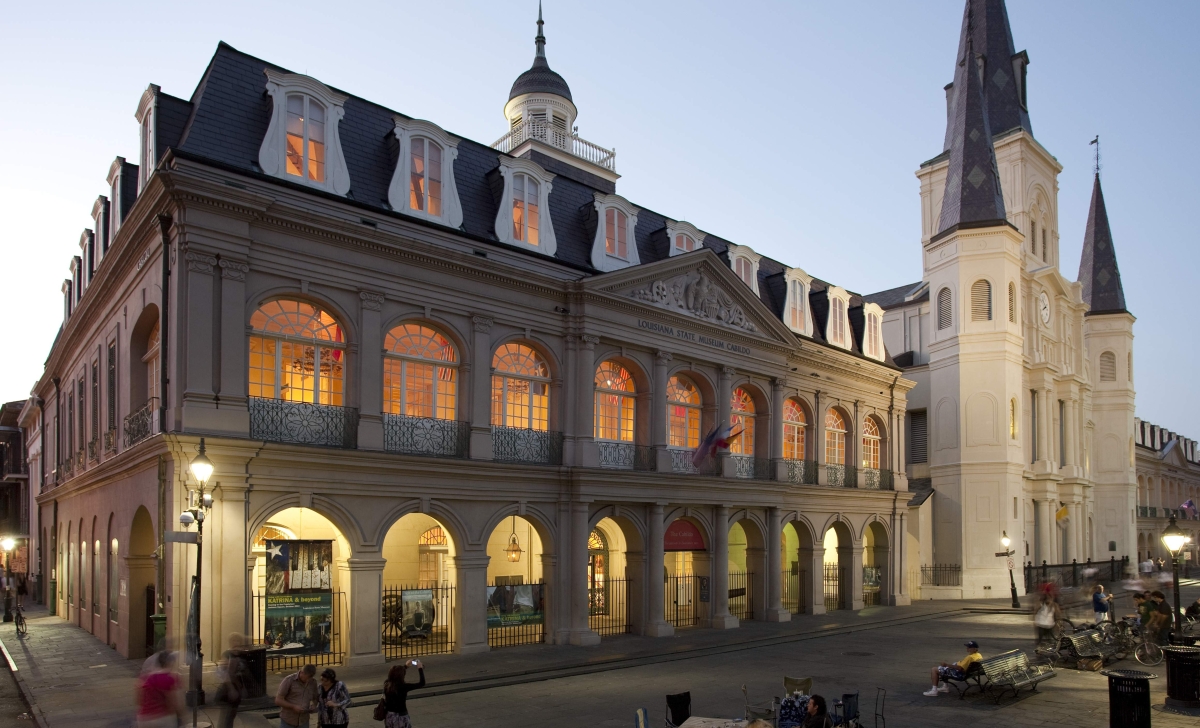
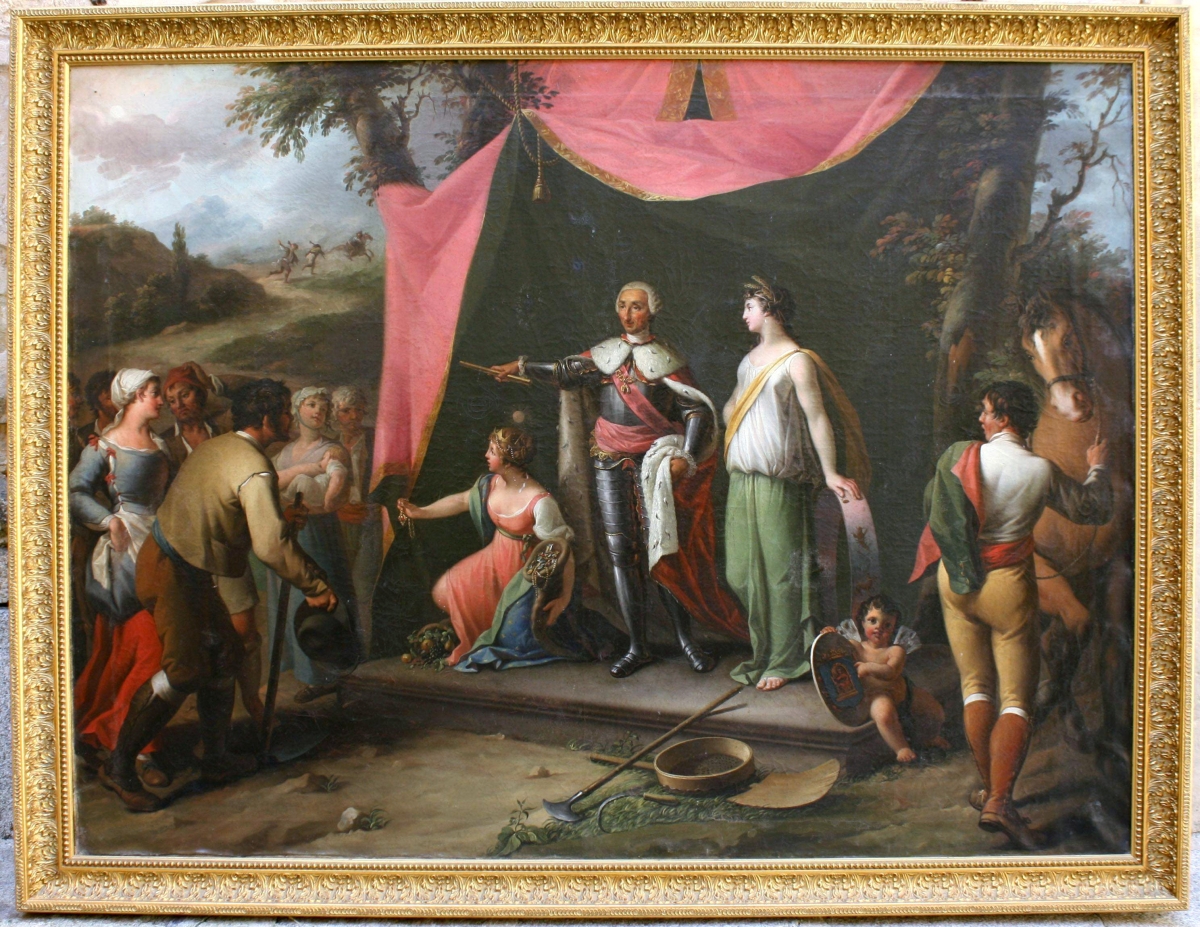
_and_his_family.jpg)
